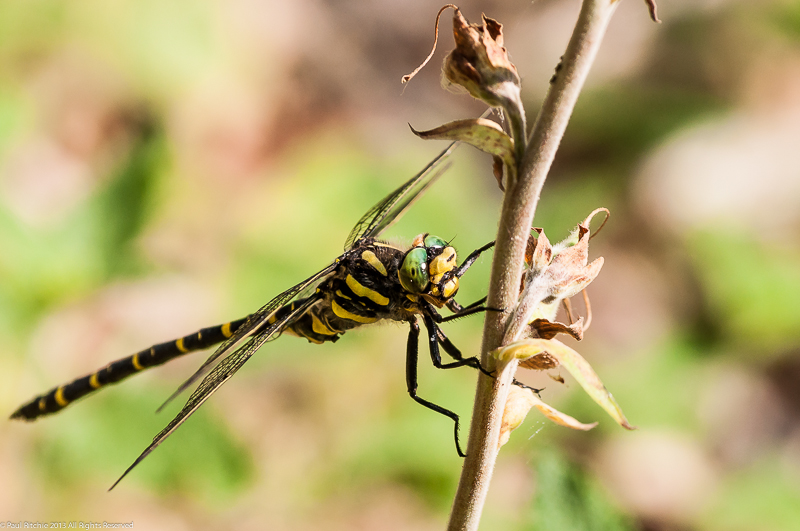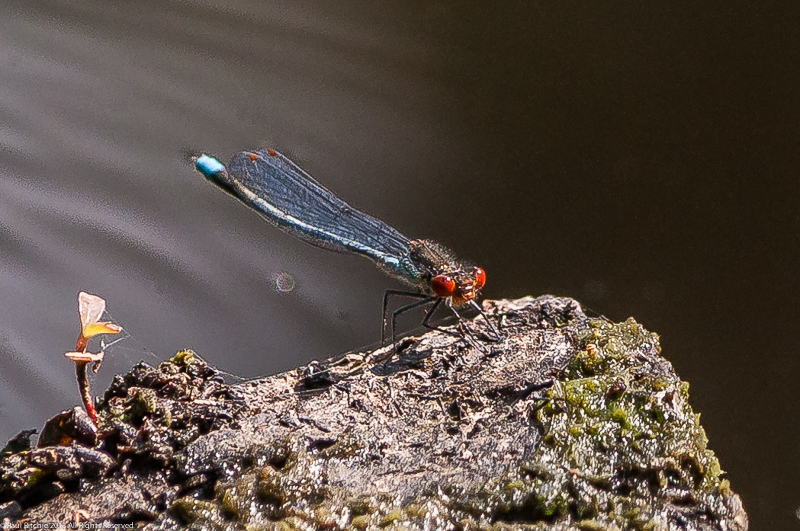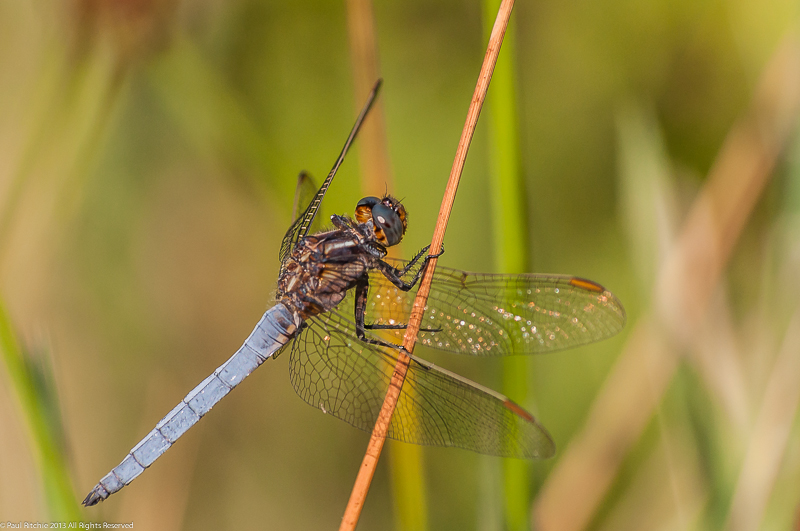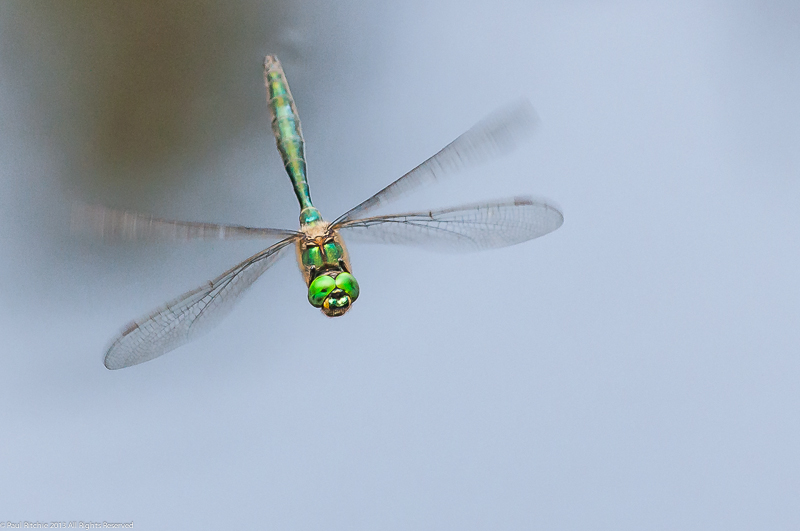My reasons for waiting so long to visit one of north Hampshire’s prime dragonfly locations has been the lack of information available. Even a recent request through the forums failed to provide the information I required. Either there wasn’t any first-hand accounts or those who knew its secrets wanted to keep it to themselves.
On Wednesday Paul Winters and I bit the bullet and went to have a look for ourselves, armed with a few grid references for supposedly the key areas. We’d studied google earth hard in an attempt to form a picture in our minds of the area; knowing from first-hand experience the difficulties encountered with unfamiliar forests I didn’t want to waste precious hours getting lost!
Thankfully our intensive map-studying directed us to the key areas without a long walk in, parking perhaps being one of the main difficulties for visitors who aren’t in the know. Within a few minutes of leaving the car we had reached the stream and headed west to locate the two woodland ponds.
There was a faint trace of a path, long overgrown with 2 metre high ferns where a scythe would have been useful. Immediately we were impressed by the numbers of Golden-ringed and Beautiful Demoiselles cramped into this short stretch; surprised in the way that two veterans of the New Forest, long used to prolific sightings of both, can be. It was a good omen.

On reaching the eastern pond we didn’t have to wait long before we witnessed our first Brilliant Emeralds patrolling low down in the shade of the opposite bank. The species I had especially come to see. Attempting a photo at such distance and low light would’ve been difficult, so I decided to wait until we found a more agreeable standpoint.
The cast was completed by Four-spotted Chasers, Downy Emeralds and Brown Hawkers along with a fine array of damsels. The causeway at the western end provided the brightest viewpoint of this predominantly dark water body. Across the overgrown causeway was the western pond, alive with good populations of Red-eyed damselflies flitting between the floating leaves of emergent vegetation or scattered pieces of flotsam.

A repeat of the previous pond’s cast but in greater numbers, including some fine Brown Hawker displays.
Around lunchtime we took advantage of the growing cloud cover to seek out the far heathland ponds at the east of the golden triangle. The view from the stream causeway offered no easy path through the jumble of fern, grasses and discarded timber left presumably after clearing to provide a wealth of invertebrate habitats.
We found a path skirting the northern tree-line which allowed us to survey the heath from above through occasional breaks in the undergrowth. On our side of the valley were ‘scrapes’ created over disused gravel hard-standings to create ideal habitat for incredible numbers of Keeled Skimmers.

Finding a break to access the valley I precariously descended the valley and continued fighting my way through to those ponds, spotting our first Small Reds on the way. I gave up trying to go any further once I’d reached the shoreline of the eastern pond and returned to the upper path where a scattering of muddy puddles on the bend produced a fine array of activity with countless Keeled, Emerald and other damsels chose to feed on the profusion of flies.
Exhausted by tramping through uneven ground and becoming increasingly dehydrated in the sticky heat, we returned to the woodland ponds where we set up camp for the rest of the afternoon. After our jaunt upstream we had accumulated a count of 22 species! Incredible!
While Paul W skirted the area hoping to increase the count, I busied myself attempting to grab an in-flight photo of those Brilliant Emeralds, which were showing more frequently than earlier but still provided a real challenge.
While I was engrossed in my pursuit I had a close visit from my old friend the Southern Hawker, who in typical fashion flew right in to give me the face-to-face and get in on the scene. Sorry mate – I didn’t come prepared for you – and wasn’t about to switch lenses or settings when the Brilliant was still around.
Ideally, when attempting in-flighters, I like to track an incoming subject over several metres of open water so I have time to focus. I didn’t have this luxury with today’s subject. All I had was a couple of metres of canvas to play with, and had to be quick off the mark as a male would appear from out of the over-hanging branches or shadows to offer me a brief glimpse before disappearing off around the corner, or shot into the trees pursued by cranky Downys.

I didn’t take many photos today. I took loads, and had my highest delete rate for a long while hoping to find a jewel among the out-of-focus, noisy or just plain empty shots of the water’s surface. When faced with an unfamiliar species, getting to know the behaviour and attempting to predict the flight path is all good practice. I’ll be better prepared next time!
I’ll end this entry by applauding the delights of Warren Heath. 22 species in a few hours on one day in such a small area is deserved of such a good reputation, despite the lack of available information (or closely-guarded secrets).
The only gripes I have are the lack of footpaths and difficult access to some of the prime areas. Seasoned dragonfly observers aware of the dangers of uneven ground, forbidding undergrowth and sometimes treacherous shoreline should still be vigilant, as a wrong footing or trip can result in disaster.
Parking is also a problem and access limited along the eastern fringes, but is possible for the observant. Research your maps well, and take a printout and compass unless you navigate by memory and the sun’s position.
The upside of this is the lack of the general public, so often a problem with the Brilliant Emeralds preference for highly-populated country parks and waterways in their southern populations.
Our first visit will live long in our memories, the sheer diversity and numbers puts it right at the top as one of the best dragonfly sites in Hampshire, if not the country.
The secret’s out!
(Site information with grid references added to location pages)
